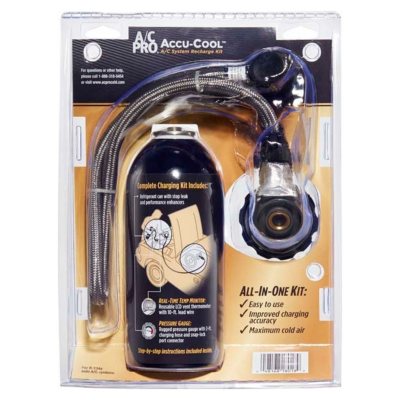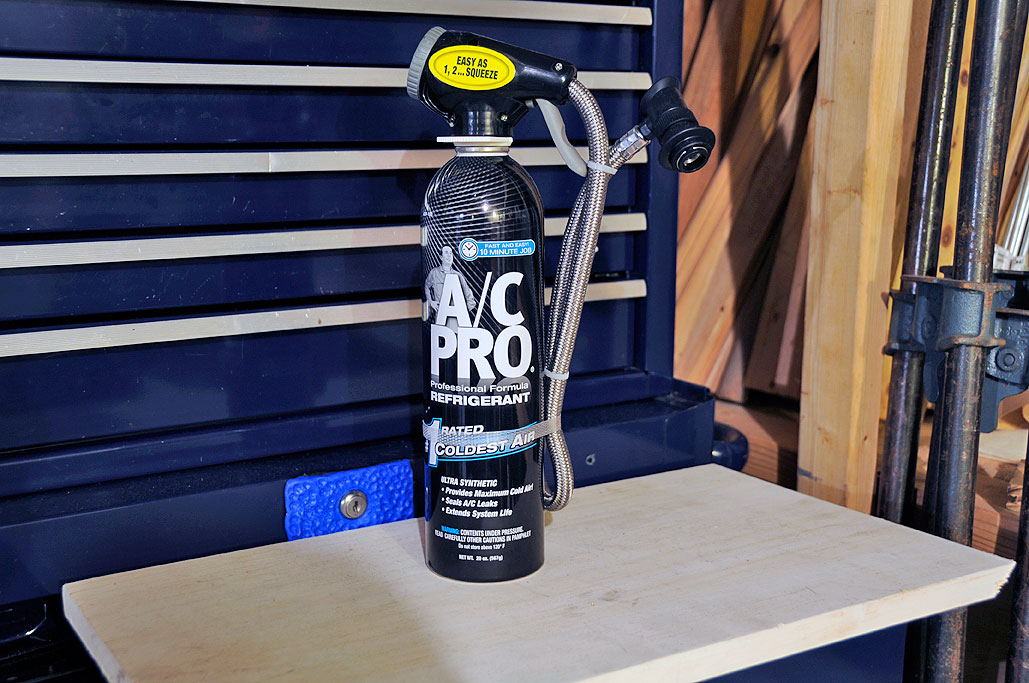Recharge Coolant Cars Over 75,000 Miles for Beginners
If the low and high pressure indicators look reduced, the system is reduced and needs recharging. But before any refrigerant is added, check for leaks where the refrigerant is currently going, to find out. AIR CONDITIONING PROBLEM: REFRIGERANT LEAKS All vehicles leak during microscopic and some refrigerant past seals pores in hoses.
Newer vehicles have seals and barrier style hoses so leak under a couple tenths of an ounce of refrigerant a year. But system capabilities also have a tendency to be smaller on newer vehicles, so any loss of refrigerant may have more of an adverse impact on performance.

Most flow fixes require replacing seals O-rings or hoses. But in the event the evaporator or condenser are leaking, repairs may be expensive. POOR COOLING PERFORMANCE Diagnosing an A/C cooling problem is achieved by connecting a gauge set to the pressure service matching on the system. Though inferior cooling is often because of a very low charge of refrigerant, it may also be brought on by many different variables (see chart above).
On an 80 degree day, the minimal gauge should read about 56 psi or higher if the A/C system comprises an adequate control of refrigerant. On a 90 degree afternoon, the LOW side reading ought to be approximately 70 psi or greater. When the LOW estimate reading is less than this, the A/C system likely requires some extra refrigerant.

Some Known Facts About Recharge Coolant Cars Over 75,000 Miles.
The majority of newer passenger car A/C systems don't hold much refrigerant (14 to 28 oz.) You don't want to include. AIR CONDITIONER PROBLEM: INTERMITTENT COOLING An A/C system that blows cold air for awhile afterward warm air is likely freezing up. This can be brought on by air and moisture in the system that allows ice to form and block the tube.

Air can get inside a procedure through leaks, by not devoting the machine prior to recharging it, or by massaging the system with refrigerant that's contaminated with air. Recovery equipment can suck air if the system has a check this site out flow or in air is contained by an A/C machine.
On some gear, this is done mechanically. But on gear that lacks an automated purge cycle, tank pressure and temperature has to be quantified and compared to a static pressure reference graph. Some refrigerant identifier gear can detect air in the system in addition to some other contaminants. An identifier should be used to inspect the refrigerant prior to the machine is serviced to avoid cross-contamination of recovery and recycling equipment.
This switch prevents the compressor from running if the refrigerant level is reduced. If the cutout switch is not reading correctly, it may stop the compressor. Compressor clutch. The magnetic clutch on the compressor demands full battery voltage. If the voltage into the clutch is low, or even so the clutch coils have too much resistance, or even the air gap in the clutch is really great, the clutch might not engage to push the compressor.
The 5-Minute Rule for Recharge Coolant Cars Over 75,000 Miles
When the A/C is switched on check to determine whether voltage is being received by the relay. Also assess the wiring and ground links. The relay is bad When routing battery voltage directly into the compressor clutch or bypassing the cable with a jumper cable makes the A/C work. Faulty A/C controller switch.
Some possible causes of intermittent cooling (or even any cooling) on automatic A/C methods incorporate all of the above, plus:A problem from the management module or controller head (this usually involves using a trader scanning instrument to read error codes and execute self-diagnostics). A bad temperature sensor (an ambient air temperature detector, interior air temperature sensor, evaporator temperature sensor, or sunload detector ).
